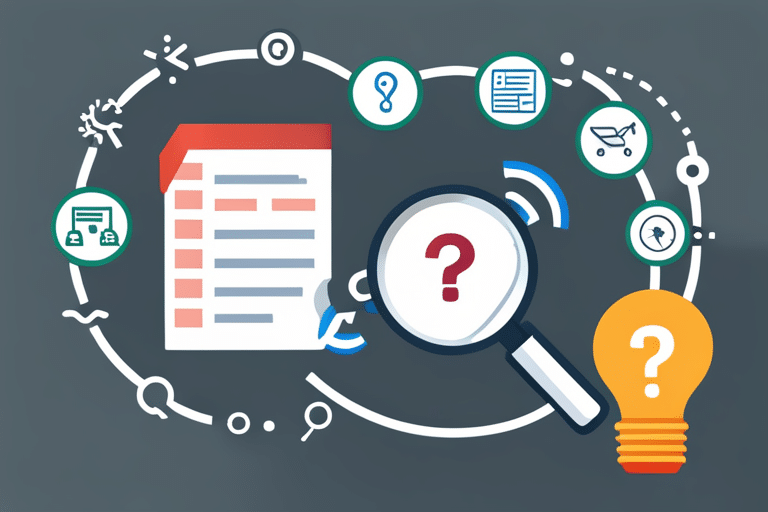Looking for a way to manage your student loan payments without breaking the bank? Curious about income-driven repayment plans and how they can help you?
Well, look no further! This guide is here to answer all your burning questions. From eligibility requirements to calculating monthly payments, we’ve got you covered.
So, why wait? Let’s dive in and master the art of income-driven repayment plans together!
Key Takeaways
- Income-driven repayment plans adjust monthly payments based on income and family size.
- Eligibility requirements must be met to qualify for income-driven repayment plans.
- There are different types of income-driven repayment plans available.
- To apply for an income-driven repayment plan, gather necessary documents and information.
Understanding Income-Driven Repayment Plans

Now that you understand the basics of income-driven repayment plans, let’s dive into how they can help you manage your student loan payments.
These plans have eligibility criteria based on your income and family size. The great thing about income-driven repayment plans is that they offer payment adjustments to ensure that your monthly payments are affordable for you.
Imagine this – instead of stressing over huge monthly bills, you get the chance to make payments based on what you can actually afford! It’s like having a personal financial wizard who looks out for your best interests.
These payment adjustments take into account factors like your salary, expenses, and even changes in your financial situation. So go ahead, embrace the magic of income-driven repayment plans and bid farewell to those sleepless nights worrying about overwhelming student loan debt!
Eligibility Requirements for Income-Driven Repayment Plans

To be eligible for income-driven repayment plans, you must meet certain requirements. Here are four key factors to consider:
-
Your monthly income: Income-driven repayment plans take into account your monthly earnings to determine the amount you can afford to pay towards your student loans. This helps ensure that your payments are manageable based on your current financial situation.
-
Loan forgiveness options: Some income-driven repayment plans offer loan forgiveness after a certain period of time. This means that if you make consistent payments for a specific number of years, any remaining balance on your loans may be forgiven. It’s like a light at the end of the tunnel!
-
Enrollment in an eligible loan program: Not all types of federal student loans qualify for income-driven repayment plans. Make sure to check if your loans are eligible before applying.
-
Annual recertification: To stay enrolled in an income-driven repayment plan, you need to recertify your income and family size each year. This ensures that your monthly payment continues to reflect your current financial circumstances.
Types of Income-Driven Repayment Plans

One of the types of income-driven repayment plans is the Pay As You Earn (PAYE) plan, which caps your monthly payments at 10% of your discretionary income. This means that your loan payments will never exceed a certain percentage of what you can afford to pay. Isn’t that great? To give you a clearer picture, here’s a handy table:
| Income Level | Monthly Payment |
|---|---|
| $20,000 | $50 |
| $30,000 | $150 |
| $40,000 | $250 |
| $50,000 | $350 |
As you can see, the PAYE plan ensures that your monthly payment adjusts based on your income level. But wait, there’s more! Not only does this plan offer payment caps to make it more manageable for you, but it also offers loan forgiveness after 20 years of qualifying payments. So not only are you paying what you can afford now, but there’s light at the end of the tunnel too! Keep striving for financial mastery and let these income-driven repayment plans work their magic for you.
How to Apply for an Income-Driven Repayment Plan

Take a moment to gather the necessary documents and information needed for your application.
Applying for an income-driven repayment plan may seem daunting, but fear not! Follow these simple steps to breeze through the process and find financial relief:
-
Income documentation: Gather your recent pay stubs or tax returns to prove your income.
-
Loan information: Have your loan servicer’s name, account number, and contact information handy.
-
Family size: Determine the number of people in your household who depend on your income.
-
Other financial obligations: Make a list of any other debts or expenses that impact your monthly budget.
Now that you’ve gathered all the required documents, you’re ready to begin the application process!
Calculating Monthly Payments Under Income-Driven Repayment Plans

So you’ve decided to explore income-driven repayment plans for your student loans, but now you’re wondering how exactly those monthly payments are calculated? Don’t worry, we’ve got you covered!
In this discussion, we’ll dive into the nitty-gritty details of payment calculation methods and eligibility requirements for IDR plans. By the end, you’ll have a clear understanding of how much you need to pay each month and whether you qualify for these flexible repayment options.
Let’s get started!
Payment Calculation Methods
To calculate your monthly payments under income-driven repayment plans, you can choose between four different methods. Each method has its own unique way of determining how much you’ll pay each month towards your student loans. Here are the options:
-
Standard Repayment: This method calculates your monthly payment based on a fixed amount over a set number of years. It’s like having a consistent workout routine for your finances.
-
Graduated Repayment: With this method, your payments start low and gradually increase over time. It’s like climbing a mountain, with small steps leading to bigger accomplishments.
-
Extended Repayment: This method allows you to extend the repayment period beyond the standard 10-year term, resulting in lower monthly payments but more interest paid over time. It’s like taking the scenic route while enjoying the journey.
-
Income-Driven Repayment: This method adjusts your monthly payment based on your income and family size, ensuring that it remains affordable throughout different stages of life. It’s like having a personal financial coach who tailors the plan according to your needs.
Each payment calculation method offers its own benefits and considerations, so choose wisely based on what suits your financial goals and circumstances best!
Eligibility Requirements for IDR Plans
If you meet the eligibility requirements, you can benefit from income-driven repayment plans. These plans are a lifesaver when it comes to managing your student loan payments.
Picture this: you’re sitting on a fluffy cloud, surrounded by unicorns and rainbows, while your monthly payments are based on what you actually earn. It’s like having a personal financial fairy godmother!
Income-based repayment takes into account your income and family size to calculate a reasonable payment amount. And here’s the cherry on top: after making consistent payments for 20 or 25 years (depending on the plan), any remaining balance may be forgiven! Yes, you heard it right – student loan forgiveness is a real possibility with income-driven repayment plans.
Pros and Cons of Income-Driven Repayment Plans

When considering income-driven repayment plans for your student loans, it’s important to weigh the pros and cons. Here are four key points to help you make an informed decision:
-
Flexibility: Income-driven repayment plans offer flexibility by adjusting your monthly payments based on your income and family size. This can provide relief when you’re just starting out in your career or facing financial hardships.
-
Extended Repayment Period: With some income-driven plans, you may have a longer repayment period, which means lower monthly payments but potentially higher overall interest costs.
-
Potential Loan Forgiveness: Depending on the plan and your eligibility, you may qualify for loan forgiveness after a certain number of years of making payments. This can be a huge weight off your shoulders!
-
Tax Implications: It’s important to consider that any remaining balance forgiven under an income-driven plan may be taxed as income in the year it’s forgiven.
Managing Student Loan Forgiveness With Income-Driven Repayment Plans

Consider carefully managing your student loan forgiveness while using income-driven repayment plans to ensure the best outcome for your financial situation.
Managing loan forgiveness may seem like a daunting task, but fear not! There are strategies out there to help you navigate this process with ease.
First, make sure you understand the requirements for loan forgiveness under your chosen income-driven repayment plan. Each plan has different eligibility criteria and time frames, so be sure to familiarize yourself with these details.
Next, keep track of your qualifying payments and employment status. Maintaining accurate records will help you stay on track towards achieving loan forgiveness.
Additionally, consider maximizing your payments whenever possible. While income-driven repayment plans aim to provide affordable monthly payments based on your income level, making extra payments can expedite the path to loan forgiveness.
Repayment Options for Borrowers With Fluctuating Incomes

Congratulations on making it this far! Now that you understand how income-driven repayment plans can help manage your student loan forgiveness journey, let’s dive into some repayment options for borrowers with fluctuating incomes.
As a freelancer, your income may vary from month to month, but don’t worry – there are strategies to help you stay on track. Here are four options to consider:
-
Income-Based Repayment (IBR): This plan caps your monthly payments at a percentage of your income and adjusts them as your earnings change.
-
Pay As You Earn (PAYE): With PAYE, your monthly payments are also based on a percentage of your income, but the calculation takes into account factors like family size and location.
-
Revised Pay As You Earn (REPAYE): Similar to PAYE, REPAYE calculates your payments based on income and other factors but does not require financial hardship qualification.
-
Income-Contingent Repayment (ICR): ICR sets monthly payments based on either 20% of discretionary income or the amount you would pay with a fixed repayment schedule over 12 years.
Now that you have an idea of the various repayment options available to you as a freelancer, let’s address some frequently asked questions about income-driven repayment plans.
Frequently Asked Questions About Income-Driven Repayment Plans

Now that you understand the various repayment options available, let’s address some frequently asked questions about income-driven plans. You may have some common concerns when it comes to these alternative repayment options, but fear not! We’re here to shed light on the matter and ease your worries.
One of the most common questions is, ‘Will my monthly payments change if my income fluctuates?’ The beauty of income-driven plans is their flexibility. Your payments will adjust based on your income, so during months when you earn less, your payments will be lower too.
Another concern is, ‘What happens if I can’t afford my payments at all?’ Don’t panic just yet! If your income drops significantly or you face unexpected financial hardship, you can apply for an Income-Driven Repayment Plan. This will ensure that your monthly payment is adjusted to a manageable amount based on your current financial situation.
Frequently Asked Questions
Can I Switch Between Different Income-Driven Repayment Plans?
Yes, you can switch between different income-driven repayment plans. However, eligibility requirements may vary for each plan. Make sure to review the guidelines and choose the one that suits your financial situation best!
Will Being on an Income-Driven Repayment Plan Affect My Credit Score?
Being on an income-driven repayment plan won’t directly impact your credit score. However, if you don’t make payments or default on your loan, that could have a negative effect. So stay on top of it!
Are There Any Tax Implications Associated With Income-Driven Repayment Plans?
Yes, there are tax implications associated with income-driven repayment plans. However, eligibility requirements and specific circumstances can affect the extent of these implications. It’s important to understand how it may impact your taxes.
Can I Still Qualify for Income-Driven Repayment Plans if I Have Multiple Student Loans?
Yes, you can still qualify for income-driven repayment plans even if you have multiple student loans. The qualifying criteria may vary, but loan consolidation could be an option to simplify the process.
What Happens if My Income Significantly Increases or Decreases While on an Income-Driven Repayment Plan?
If your income increases significantly, it may affect your eligibility for income-driven repayment plans. You might have to switch to a standard repayment plan or pay off your loans faster. If your income decreases, you could qualify for lower payments and potentially extend the loan term.
Conclusion
So there you have it, dear reader! You’ve reached the end of this guide to income-driven repayment plans for student loans. Congratulations on making it this far!
Now, as you embark on your journey towards financial freedom, remember that these plans are here to help you navigate the treacherous waters of student debt. It’s ironic, isn’t it? The very system that burdened you with loans now offers a lifeline.
Embrace it and let the waves of relief wash over you. With some patience and careful planning, you’ll soon be sailing towards a brighter future without those pesky loan sharks nipping at your heels.
Bon voyage!

